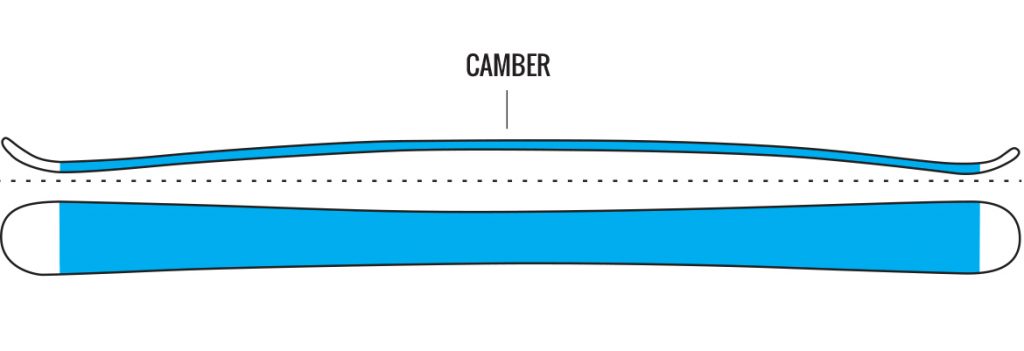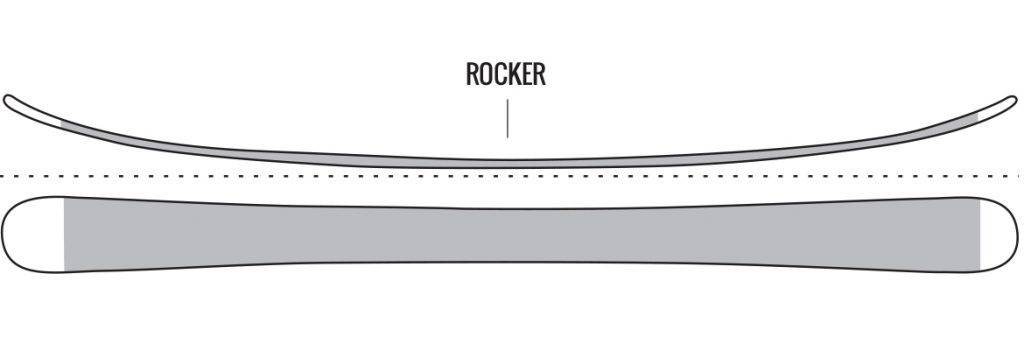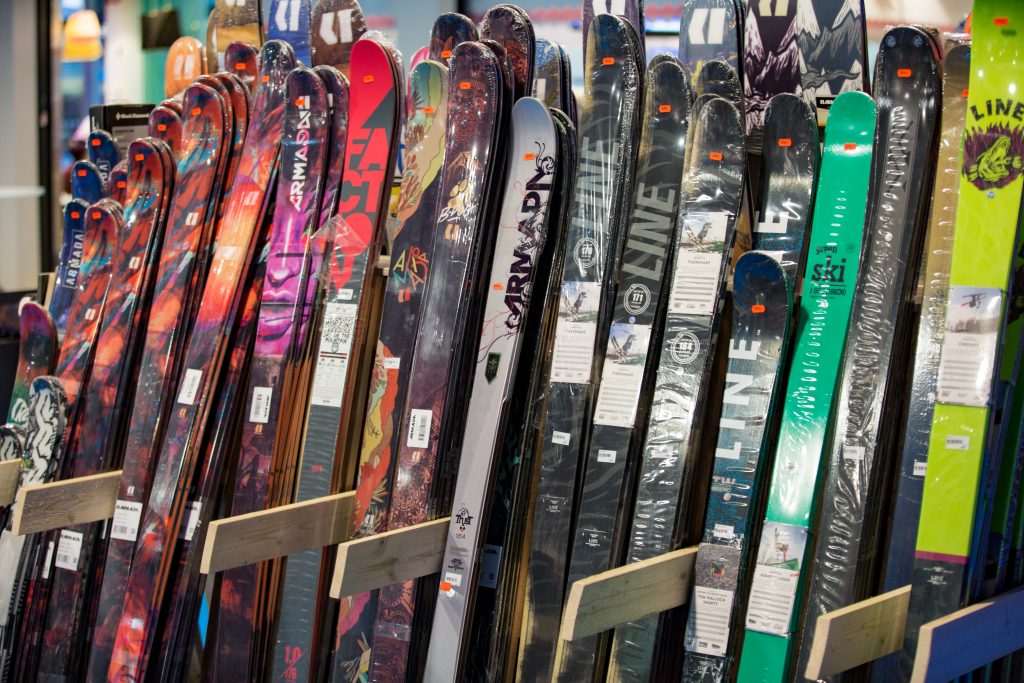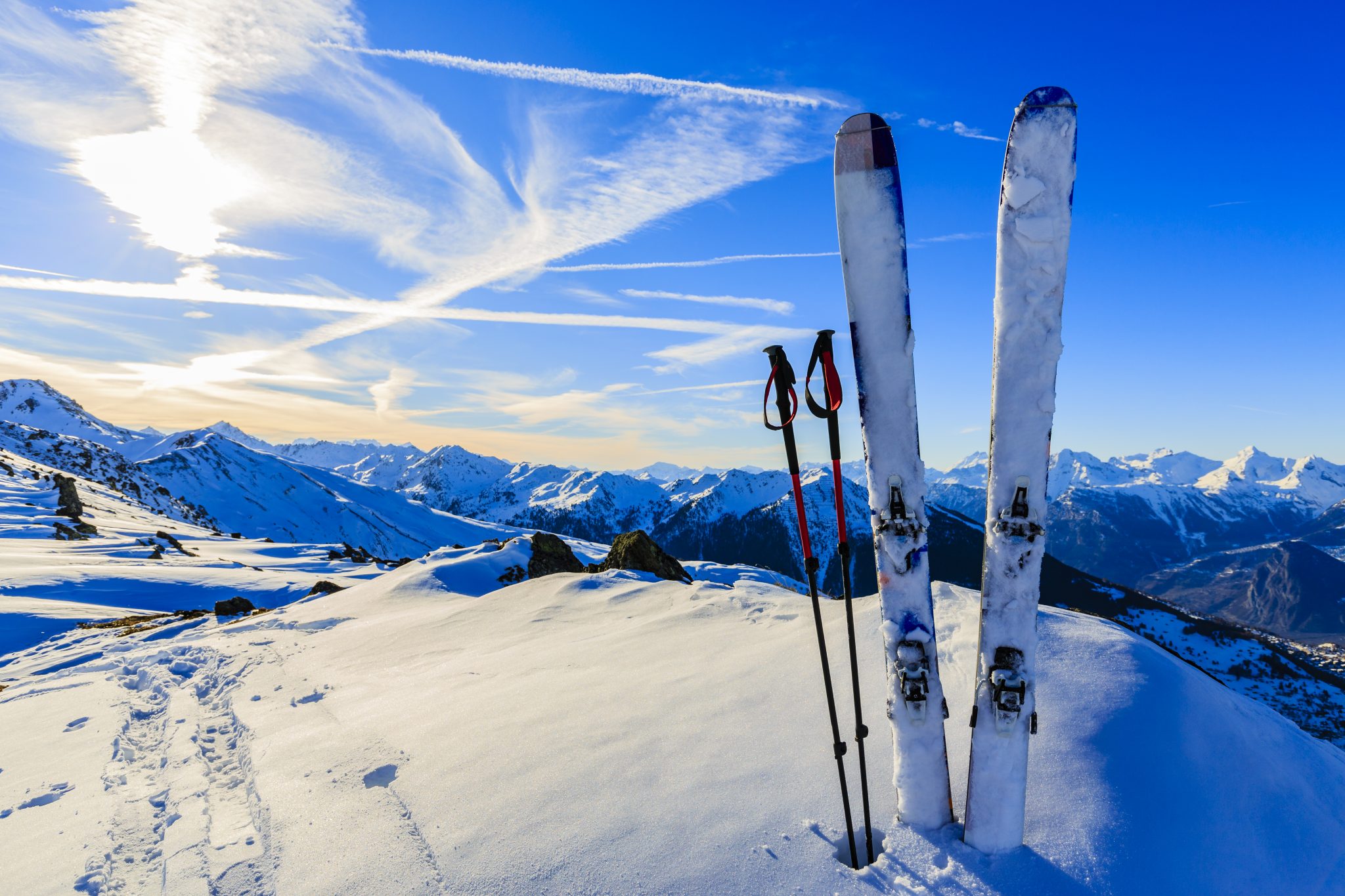It’s time. You’ve been hiring your skis for a while now, and you’re pretty comfortable with the idea that you’ll be skiing for a long time to come. It makes sense to invest in your own pair of skis – something you can take on ski holidays with you.
So how do you choose the perfect pair of skis, when there are plenty out there to choose from?
We cut through the marketing jargon and complicated bits and asked a panel of ski experts about their top tips for choosing a new pair of skis. Here are their wise words.
How, what and where do you like to ski?
“One of first things to consider when investing in a new pair of skis is where you actually ski and what type of terrain you spend most of your time skiing on,” says Nick Hill from Sportrade, distributors for Volkl.
Skiing the groomers in Australia the majority of the time? You’re going to need a very different side cut ski to someone who’s spending most of their ski days in the powder fields of Japan where you’ll need fat skis with rocker. Or you might even be heading to somewhere like Canada and planning to ski a mix of on-piste and off-piste – and you need a ski that’s able to do a bit of both (all mountain skis will work for this). Maybe you prefer the terrain park and want a twin tip?
“Find an experienced ski shop with a quality mix of brands, and a shop hardware assistant that asks you a lot of questions to help get a idea of what model and brand would be suitable,” adds Nick.
“Trust the sales assistant to guide you to the right model of flex stability and length for your needs.”
Be sure to get the sales assistant to talk you through each element of the ski to help you understand exactly what makes it right for you. They may discuss rocker and camber (the ‘bend’ of the ski), the sidecut (the ‘shape’ of the ski) and explain how it all works to give you the best possible on-snow experience.
Basically Camber is the curve in the middle of the ski, it curves upward and is great for harder snow and groomers. Rocker is a reverse camber with more pressure at the tip and tail when on the snow. They are great for powder snow to achieve float and turn.
“The core is at the heart of every good ski, and is a major factor in determining its flex, stability, liveliness and playfulness. The best ski brands have engineering to optimise performance and efficiency, with a lively, lightweight feel,” Nick says. “With this comes less exertion, and improves your reaction control and self confidence.”


Be honest
Rob Fuleky from Rossignol in Australia points out that it’s important to be honest about your ability when shopping for your skis, and where you plan your skill level to be in 12 months time. This gives your sales assistant the best possible opportunity to match you with the right ski.
This is not the time to exaggerate your on-snow ability – if you brag about your carving skills but you’ve never even been on a intermediate run, you may be forking out a significant amount of money for the wrong ski. A good well chosen ski for your needs will help you progress to your next level.
Don’t get caught up in price tags
Klaus Mair from Sofa Ski School, who is a Level 3 Austrian ski instructor, explains that a more expensive ski may not always be the better ski for you.
“Sometimes, especially in Europe, skiers are on skis that are too stiff for them,” he says. “A cheaper, easier to ski model would often allow them to get more performance at lower speeds and with more control.”
There’s also no need to get caught up in the idea of buying multiple pairs of skis.
“Most of my colleagues ski on the same pair of skis all season,” adds Klaus. “I ski on my Kästle RX12 GS in all conditions and terrain.”
Klaus has noticed seeing too many skiers on skis that are too wide for what they ski most of the time.
“Unless you spend most of your time in deep powder, off-piste conditions, you don’t need a ski that is wider than 90mm under foot. Pick a ski that gives you some feedback when you put it on the edge and be careful not to pick a ski that is too soft and too wide and turns you into a backseat, inside lean cruiser.”
On the other end of the spectrum, there are very few skiers who should be on a specialized SL (slalom) ski.
“The right choice is often somewhere in the middle, and mainly depends on your ability and the terrain that you usually ski,” says Klaus.
Find a demo day
This is a big one.
“When it comes to buying skis, I always recommend to demo them first,” says Klaus. “You can find out how the skis feel and what length suits you best.”
You can regularly find demo days being held at various resorts around Australia throughout the winter season – a quick google of your resort of choice will bring up any options. You might also be able to get a free demo from a ski shop. Some will rent you various pairs of skis and waive the rental fee if you decide to purchase a pair. If you find a ski you like try it in different lengths to decide which works best for you.
Try and see if you can test out several pairs of skis before settling on your favourites – whether you spend a whole day or just a couple of laps testing them out, it’s a great way to be sure of your investment.

Consider renting first
Matt Hampton, CEO of Rhythm Japan, has a good tip for anyone who’s still unsure about pouring money into a new pair of skis.
“I personally believe it’s essential to own your own boots, but renting a pair of top-of-the-line skis is a great way to go,” he says. “It means you will always have the perfect ride for the conditions and you won’t need to drag a burly ski bag all over the show.”
This is especially true if you’re heading overseas – with the money you may spend on excess/oversize ski baggage, renting a pair of skis may work out to be more cost-effective than bringing your own along. And it works out especially well for places such as Japan, where you’ll likely want a much more powder-friendly ski than what you’d normally ride.
What pair of skis do you have? How did you choose them? Any extra tips for us?
In the market for a snowboard? Then you’ll need our ultimate guide to buying a snowboard.







My first pair were Atomic Smoke skis in 175 cm with 75 under foot. Perfect skis to learn on. They suited me even though they were a little short, I am 194 cm. I now use Atomic Vantage 90 cti in 184 cm. For my ability height and the conditions I ski, Australia NZ and Canada west coast , they are perfect. I love them and have had them in over a meter of fresh POW, and frozen hardpack.
Tried many others, Demo days in Queenstown these were the ski for me.
Good luck finding yours.